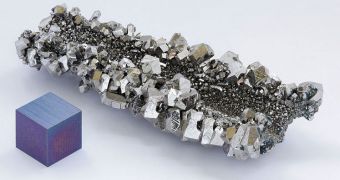With China now controlling the international market for rare-Earth elements (REE), the world is beginning to look for alternatives on how to compensate for the lack of these precious chemicals.
Such minerals can be found in almost all categories of electronic devices, ranging from hard drives and electrical motors for hybrid vehicles to solar panels and similar technologies.
But, while the world is continuously expanding in this area, it requires increasingly larger amounts of REE to keep going. However, the minerals are no longer available.
China alone controls an estimated 90+ percent of the REE market, and it has repeatedly stated that it will reduce its exports as its own demands soar, and the elements become harder to find.
This happened for the first time three weeks ago, when China places a block on all REE shipments to Japan, which is a nation that consumes important amounts of rare minerals.
The international community got a cold shower on this occasion, and a stark reminder that action needs to be taken in order to counterbalance Beijing's control over REE supplies.
Scientists around the world are working both on replacing these minerals in some key applications, and on creating new materials, that would perform similar functions.
Some of the most popular REE include terbium (used for lasers, fluorescent lamps and flat-panel TV), neodymium (used to create permanent magnets), niobium (which makes superconducting magnets, alloys and electroceramics) and tantalum (used to make capacitors and some high-power resistors).
In spite of their ominous name, the 17 chemicals in this class are actually abundant in our planet's crust. However, low Chinese production costs have forced other suppliers out of business.
Even in the United States, authorities are beginning to take steps to address the monopoly Beijing has on REE supplies. Congress has already unlocked funds for group searching for deposits in the country.
Universities are also working on developing alternatives to most of the necessary REE, although whether these elements will be successful once complete is still uncertain.
The US is also considering reopening its REE production chain, which includes mining, refining, and manufacturing. It was shut down years ago, amidst environmental concerns, and because of low Chinese prices.
However, even under the most optimistic scenarios, ridding the world of its dependency on Chinese-made rare-Earth elements would take years, Technology Review reports.

 14 DAY TRIAL //
14 DAY TRIAL //